Mengzhe He
Cross Domain Object Detection by Target-Perceived Dual Branch Distillation
May 03, 2022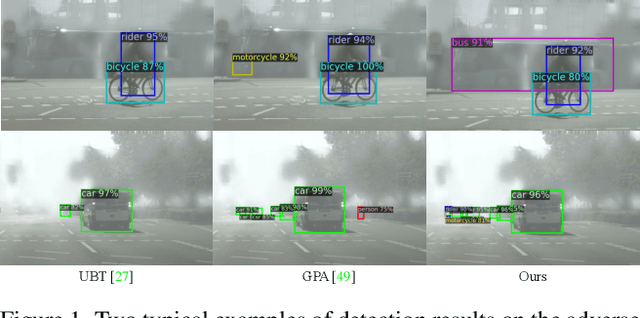
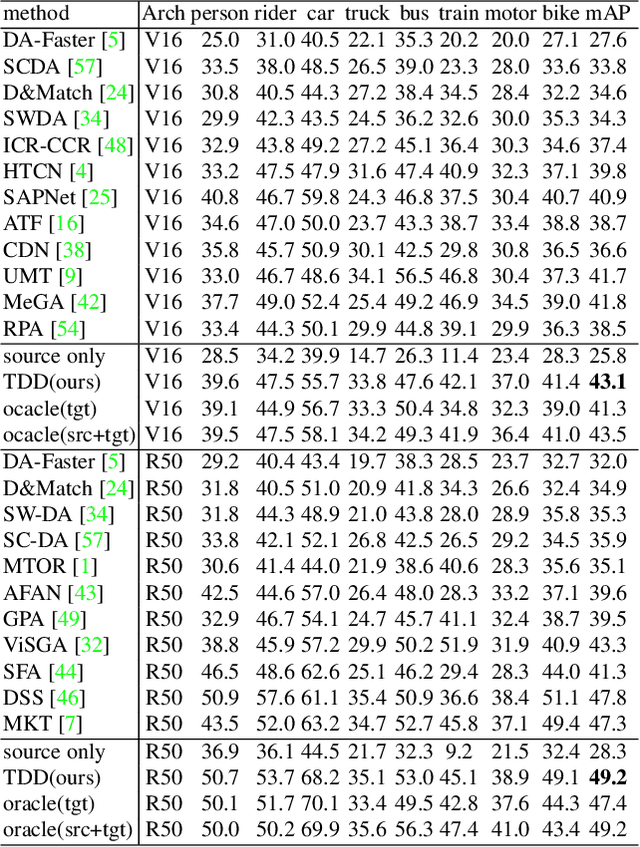
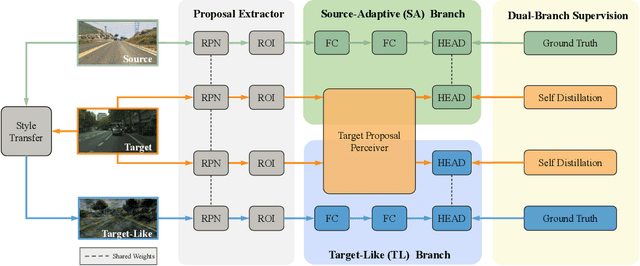
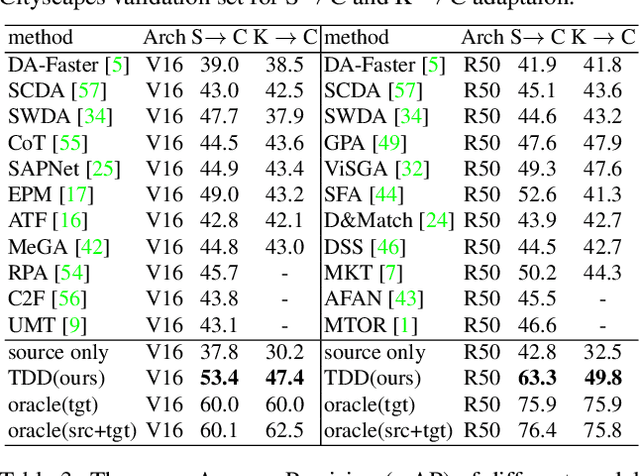
Abstract:Cross domain object detection is a realistic and challenging task in the wild. It suffers from performance degradation due to large shift of data distributions and lack of instance-level annotations in the target domain. Existing approaches mainly focus on either of these two difficulties, even though they are closely coupled in cross domain object detection. To solve this problem, we propose a novel Target-perceived Dual-branch Distillation (TDD) framework. By integrating detection branches of both source and target domains in a unified teacher-student learning scheme, it can reduce domain shift and generate reliable supervision effectively. In particular, we first introduce a distinct Target Proposal Perceiver between two domains. It can adaptively enhance source detector to perceive objects in a target image, by leveraging target proposal contexts from iterative cross-attention. Afterwards, we design a concise Dual Branch Self Distillation strategy for model training, which can progressively integrate complementary object knowledge from different domains via self-distillation in two branches. Finally, we conduct extensive experiments on a number of widely-used scenarios in cross domain object detection. The results show that our TDD significantly outperforms the state-of-the-art methods on all the benchmarks. Our code and model will be available at https://github.com/Feobi1999/TDD.
Target-Relevant Knowledge Preservation for Multi-Source Domain Adaptive Object Detection
Apr 17, 2022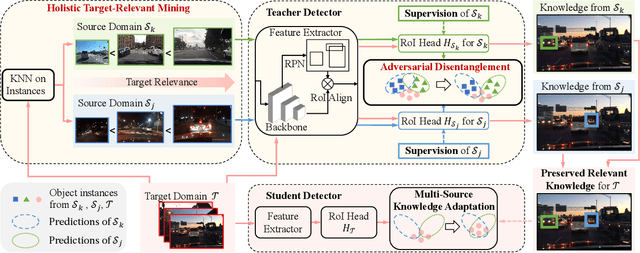
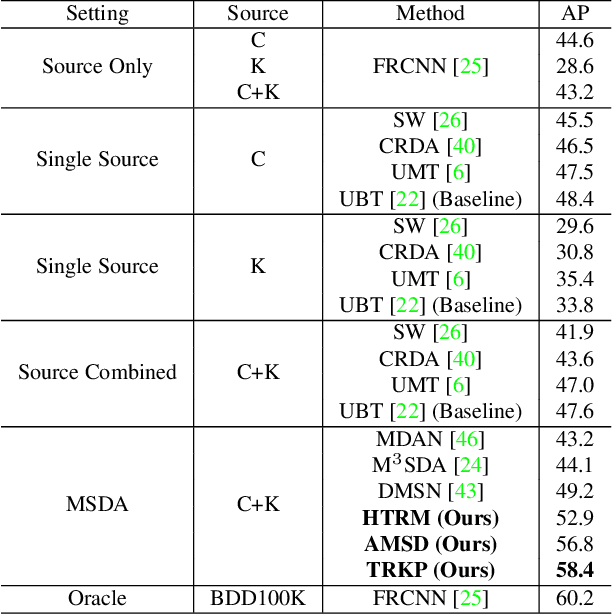

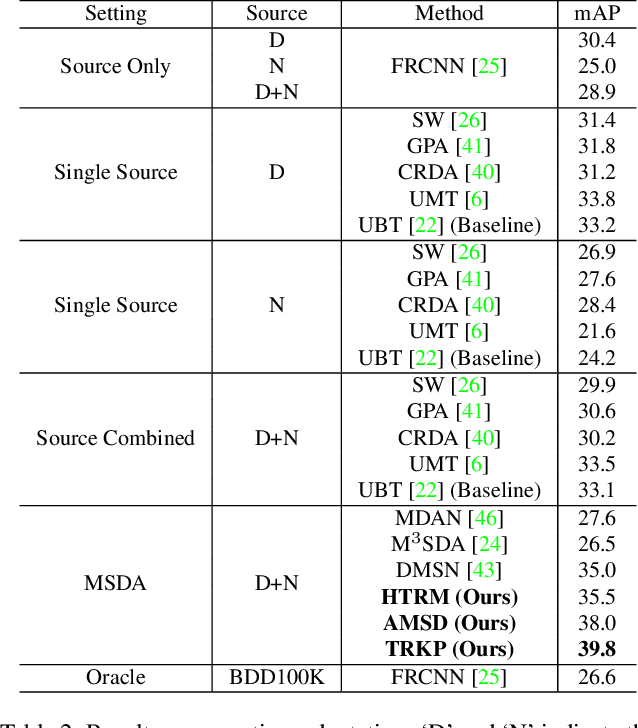
Abstract:Domain adaptive object detection (DAOD) is a promising way to alleviate performance drop of detectors in new scenes. Albeit great effort made in single source domain adaptation, a more generalized task with multiple source domains remains not being well explored, due to knowledge degradation during their combination. To address this issue, we propose a novel approach, namely target-relevant knowledge preservation (TRKP), to unsupervised multi-source DAOD. Specifically, TRKP adopts the teacher-student framework, where the multi-head teacher network is built to extract knowledge from labeled source domains and guide the student network to learn detectors in unlabeled target domain. The teacher network is further equipped with an adversarial multi-source disentanglement (AMSD) module to preserve source domain-specific knowledge and simultaneously perform cross-domain alignment. Besides, a holistic target-relevant mining (HTRM) scheme is developed to re-weight the source images according to the source-target relevance. By this means, the teacher network is enforced to capture target-relevant knowledge, thus benefiting decreasing domain shift when mentoring object detection in the target domain. Extensive experiments are conducted on various widely used benchmarks with new state-of-the-art scores reported, highlighting the effectiveness.
 Add to Chrome
Add to Chrome Add to Firefox
Add to Firefox Add to Edge
Add to Edge